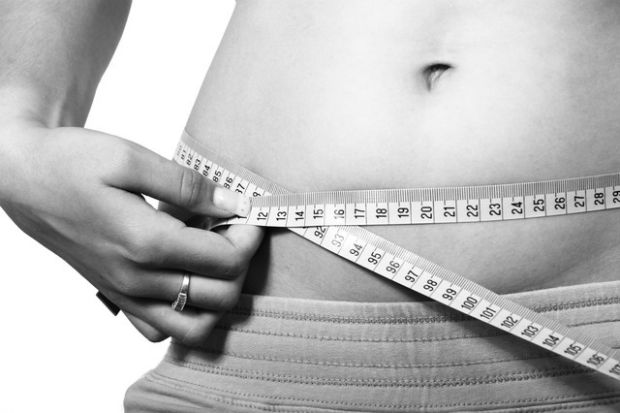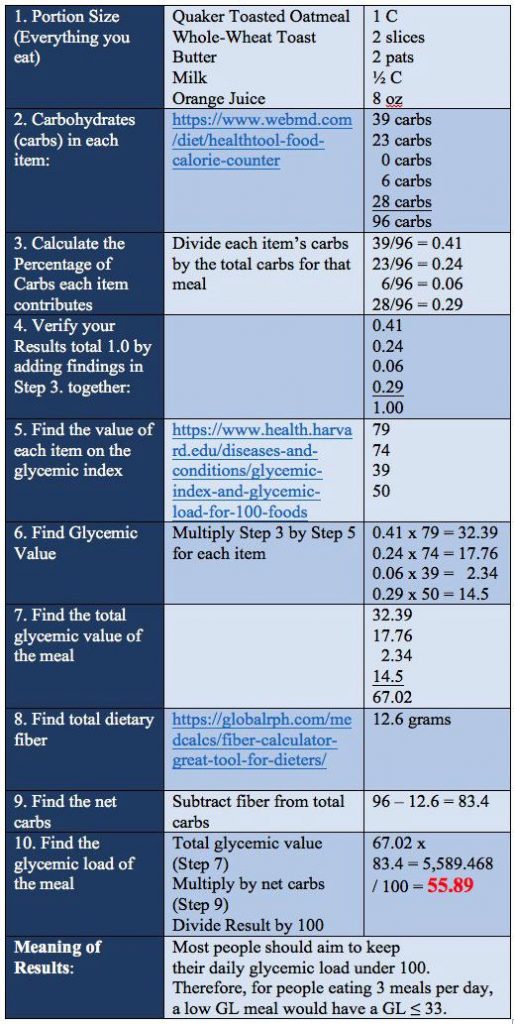Glycemic Load, Glycemic Index, and Insulin Index
3 Terms You Need To Know If You Are Looking To Lose Weight!
By Travis Wade
Glycemic Load, Glycemic Index, and Insulin Index are three terms people watching their weight and diabetics will need to know. I feel the urge to explain each term.

Glycemic Index
The glycemic index is a scale from 0-100, which is used to measure how fast blood glucose level rises after food has been consumed compared to pure glucose. Glucose has arbitrarily been given 100 on the glycemic index scale. The index is a way to distinguish between fast-acting carbs and slower acting carbs. Some common types of carbohydrate-rich food that have a high glycemic index are bread, potatoes, rice and pasta.
High glycemic foods are a problem for those looking to lose weight because they get absorbed into the blood quickly. We have approximately 5 litres of blood in us and it can only hold about three teaspoons of sugar at a time. High glycemic foods cause a massive increase in your insulin to promptly store the sugar in muscle or fat cells. After the surge in insulin is a crash in blood sugar. We end up feeling tired, hungry, and low in energy.
Conversely, low glycemic types of food increase blood sugar slowly. Insulin levels also increase gradually. It takes a lot longer to feel hungry and tired. Some examples of these kinds of foods are beans, lentils, asparagus, spinach, kale, cauliflower, cucumbers, broccoli, tomatoes, onions, and zucchini.
| FOOD | Glycemic index (glucose = 100) |
| HIGH-CARBOHYDRATE FOODS | |
| White wheat bread* | 75 ± 2 |
| Whole wheat/whole meal bread | 74 ± 2 |
| Specialty grain bread | 53 ± 2 |
| Unleavened wheat bread | 70 ± 5 |
| Wheat roti | 62 ± 3 |
| Chapatti | 52 ± 4 |
| Corn tortilla | 46 ± 4 |
| White rice, boiled* | 73 ± 4 |
| Brown rice, boiled | 68 ± 4 |
| Barley | 28 ± 2 |
| Sweet corn | 52 ± 5 |
| Spaghetti, white | 49 ± 2 |
| Spaghetti, whole meal | 48 ± 5 |
| Rice noodles† | 53 ± 7 |
| Udon noodles | 55 ± 7 |
| Couscous† | 65 ± 4 |
| BREAKFAST CEREALS | |
| Cornflakes | 81 ± 6 |
| Wheat flake biscuits | 69 ± 2 |
| Porridge, rolled oats | 55 ± 2 |
| Instant oat porridge | 79 ± 3 |
| Rice porridge/congee | 78 ± 9 |
| Millet porridge | 67 ± 5 |
| Muesli | 57 ± 2 |
| FRUIT AND FRUIT PRODUCTS | |
| Apple, raw† | 36 ± 2 |
| Orange, raw† | 43 ± 3 |
| Banana, raw† | 51 ± 3 |
| Pineapple, raw | 59 ± 8 |
| Mango, raw† | 51 ± 5 |
| Watermelon, raw | 76 ± 4 |
| Dates, raw | 42 ± 4 |
| Peaches, canned† | 43 ± 5 |
| Strawberry jam/jelly | 49 ± 3 |
| Apple juice | 41 ± 2 |
| Orange juice | 50 ± 2 |
| VEGETABLES | |
| Potato, boiled | 78 ± 4 |
| Potato, instant mash | 87 ± 3 |
| Potato, french fries | 63 ± 5 |
| Carrots, boiled | 39 ± 4 |
| Sweet potato, boiled | 63 ± 6 |
| Pumpkin, boiled | 64 ± 7 |
| Plantain/green banana | 55 ± 6 |
| Taro, boiled | 53 ± 2 |
| Vegetable soup | 48 ± 5 |
| DAIRY PRODUCTS AND ALTERNATIVES | |
| Milk, full fat | 39 ± 3 |
| Milk, skim | 37 ± 4 |
| Ice cream | 51 ± 3 |
| Yogurt, fruit | 41 ± 2 |
| Soy milk | 34 ± 4 |
| Rice milk | 86 ± 7 |
| LEGUMES | |
| Chickpeas | 28 ± 9 |
| Kidney beans | 24 ± 4 |
| Lentils | 32 ± 5 |
| Soya beans | 16 ± 1 |
| SNACK PRODUCTS | |
| Chocolate | 40 ± 3 |
| Popcorn | 65 ± 5 |
| Potato crisps | 56 ± 3 |
| Soft drink/soda | 59 ± 3 |
| Rice crackers/crisps | 87 ± 2 |
| SUGARS | |
| Fructose | 15 ± 4 |
| Sucrose | 65 ± 4 |
| Glucose | 103 ± 3 |
| Honey | 61 ± 3 |
| Data are means ± SEM. * Low-GI varieties were also identified. † Average of all available data. | |
Reprinted with permission from Fiona S. Atkinson, RD, Kaye Foster-Powell, RD and Jennie
C. Brand-Miller, PHD: International Tables of Glycemic Index and Glycemic Load Values: 2008
Diabetes Care 2008 Dec; 31(12): 2281-2283. https://doi.org/10.2337/dc08-1239. Copyright
2008 by the American Diabetes Association
Glycemic Load
Glycemic load is a number used to depict the impact that food will have on a person’s blood glucose level over some time. It is calculated by multiplying the weight in grams of the carbohydrates in the food with the glycemic index divided by 100. [(grams of carbs) x (glycemic index)] ÷ 100.
For example, let’s say you had a meal that weighed 1 kg, but there were only 500 grams of carbohydrates in it. We would need to know the glycemic index of each of the different types of food in the meal to get an average. For the sake of this example, let’s say the average glycemic index of the meal was 52. The glycemic load is then calculated as 52×500/100=260.
Glycemic load depends on the glycemic index and the amount of carbohydrates consumed. If you only eat a little bit of pasta, which is very high on the glycemic index, you won’t raise your blood sugar too much due to the small amount of food you ate. You can calculate the glycemic load of a specific type of food (e.g. pasta or broccoli) or a whole meal, or all the food you ate in a day.
How To Calculate Glycemic Load

Insulin Index
The insulin index is the number representing the increase in insulin in the blood within two hours after food has been consumed. Food that has a high glycemic index is going to have a much more significant impact on insulin levels than the same quantity of food with a low glycemic index.
However, certain foods that don’t have that high of a glycemic index can also massively increase insulin, such as fish, oranges, or yogurt. This is because the insulin index takes into consideration the glucose contribution from the breakdown of other types of food, not just carbohydrates. Glucose from the conversion of protein, alcohol, and to a much lesser degree, fat can increase insulin levels as well.
The insulin index is probably the most important of the three measures. This is because the more you increase your insulin levels, the more you are storing calories in your cells. If your muscles don’t need energy because they are full, then the calories get stored as fat.
Good, Healthy Foods
Protein



Poultry: chicken, turkey, duck, pheasant, Cornish game hen, look for hormone and antibiotic-free.
Seafood: mackerel, anchovies, clams, cod, crab, flounder/sole, herring, small halibut, mussels, wild salmon (canned or fresh), sardines, sable, shrimp, scallops, trout.
Eggs: Up to 8 per week, organic or omega 3 eggs only.
Red or Wild Meat: lamb, beef, bison, venison, ostrich, deer, elk.
Soy: tofu or tempeh, organic non-GMO only.
Nuts: almonds, Brazil, cashews, hazelnuts, macadamia, pecans, pine, pistachios, walnuts, raw cacao.
Seeds: chia, flax, hemp, pumpkin, sesame, sunflower.
Nut/Seed Butters: Almond, cashew, pecan, macadamia, walnut.
Nut Flours: almond meal, coconut flour.
Fruit

Blackberries, blueberries, cranberries, kiwi, lemons, limes, raspberries.
Fat

For cooking with high heat: grass-fed butter, grapeseed oil, avocado oil.
For cooking with moderate heat: grapeseed oil, coconut oil, unrefined sesame.
Preparation without heat: flaxseed, extra virgin olive.
Nuts & Seeds: (See above).
Fish: mackerel, sardines, trout, herring, anchovies.
Produce: avocado, olives, raw cacao, coconut.
Beverages

Purified water, herbal tea, seltzer, mineral water (in moderation).
Non-Starchy Vegetables

Artichokes, arugula, asparagus, avocado, bean sprouts, beet greens, broccoli, Brussels sprouts, cabbage, cauliflower, celery, chives, collard greens, cucumber, dandelion greens, eggplant, endive, garlic, ginger root, green beans, hearts of palm, kale, kohlrabi, lettuce, mushrooms, mustard greens, onions, parsley, peppers (bell, chilli, etc.), radicchio, radish, rutabaga, seaweed, shallots, snap beans, snow peas, spinach, summer squash, Swiss chard, tomatillos, tomatoes, turnips, turnip greens, watercress, zucchini.
From Dr. Mark Hyman’s “10 Day Detox Diet“
Remember, we have a minimal amount of calories we can take in, and we need to maximize the nutrients in those calories. Avoid empty calories and get as nutrient-rich foods as you can. Get a variety to try and meet your body’s needs.
I wish you lots of health, love and happiness!
Travis Wade
The only holistic personal trainer in Edmonton.
Want To Get Started On A New Lifstyle Right Away?
Or
Would You Like A Plan To Achieve Your Fitness Goals?
Sign Up For Online Personal Training!


